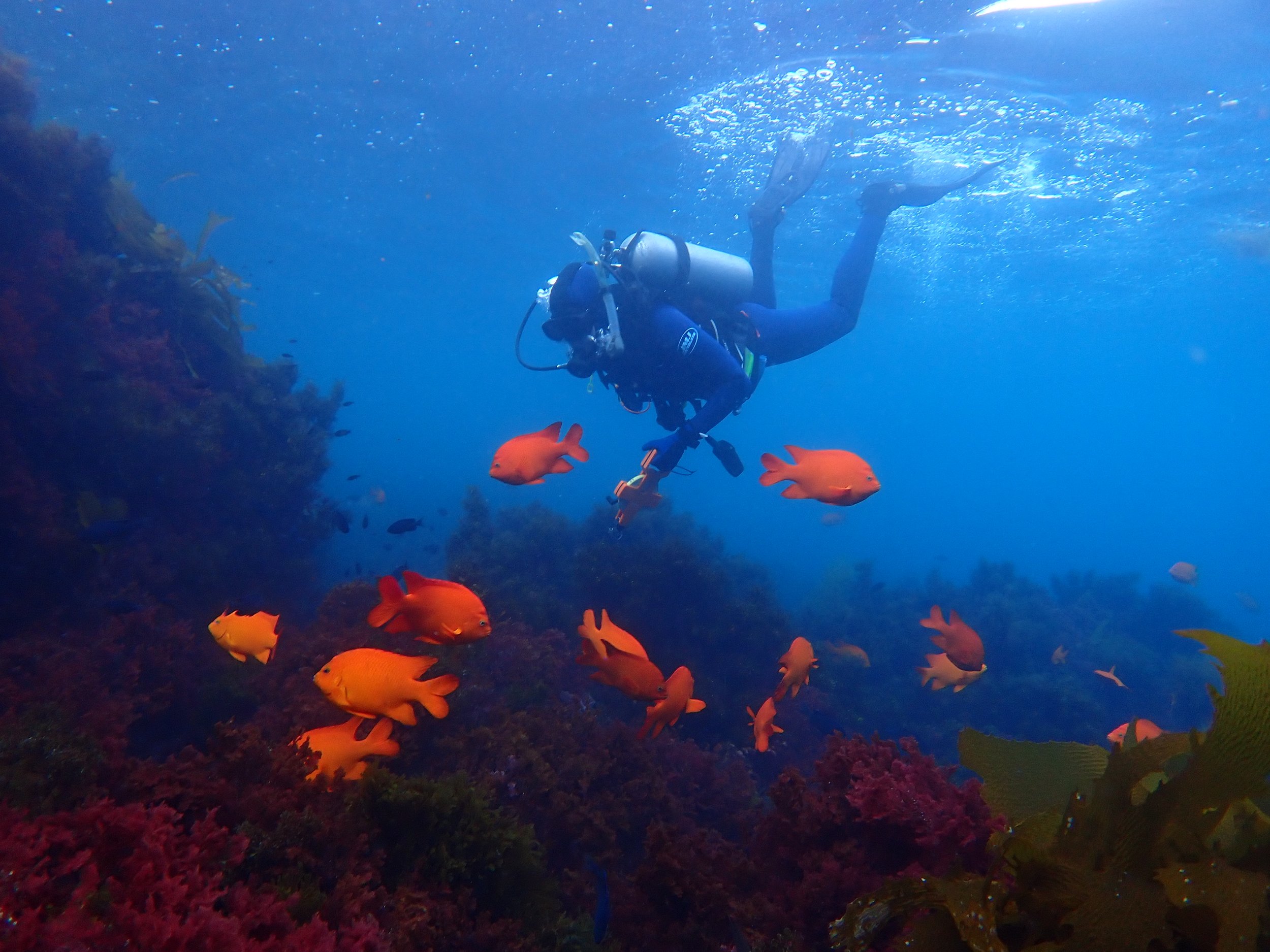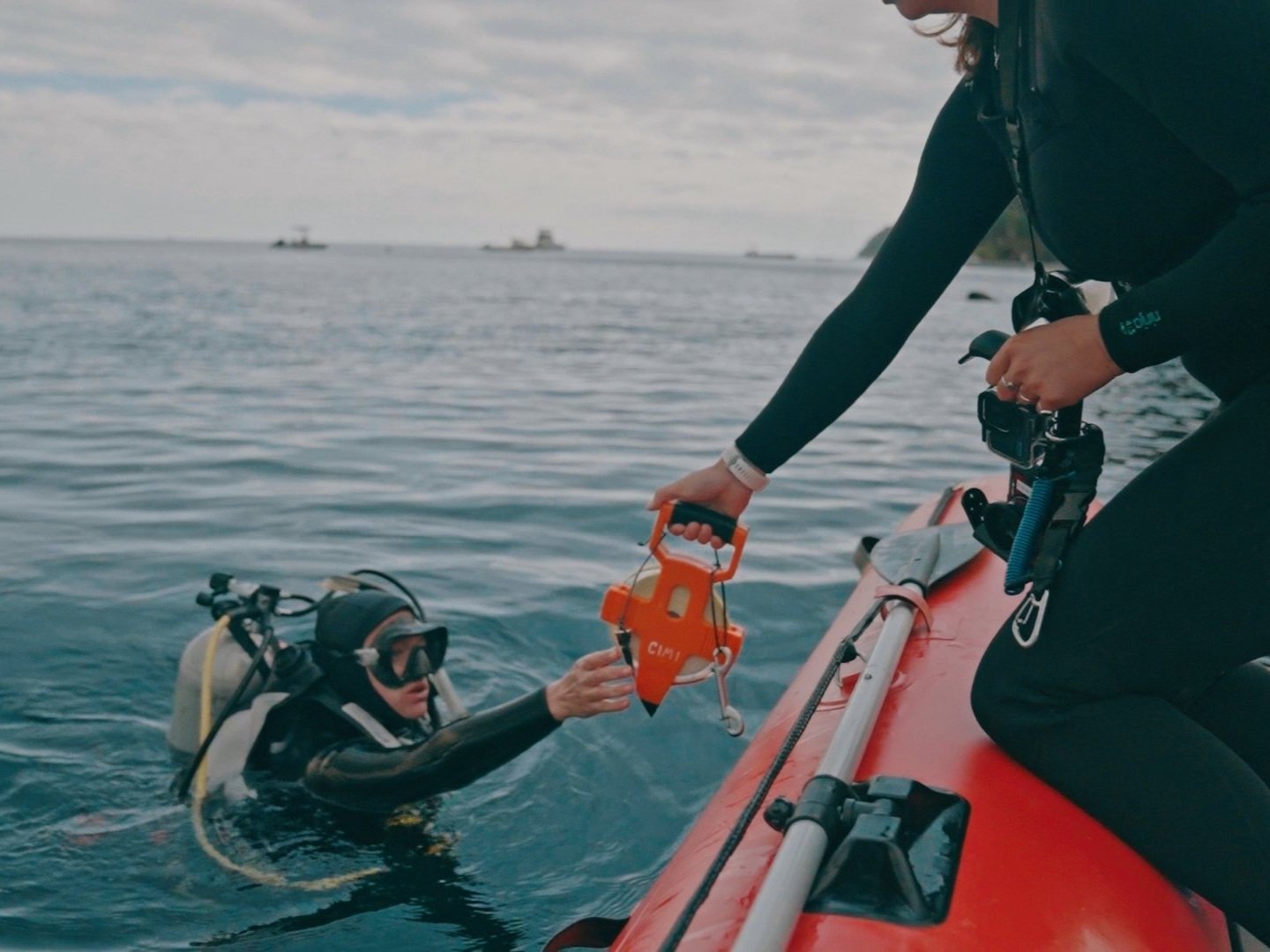
How We Monitor
Monitoring Methods
Kelp forests are shaped by both natural events and human activities, making continuous monitoring essential for effective restoration. Our team tracks various environmental factors, marine species, and kelp canopy coverage to develop a data-driven understanding of these ecosystems. This information is crucial for documenting short and long-term changes, assessing kelp forest health, and informing management strategies!
Monitoring Environmental Conditions
Kelp thrives in cold, nutrient-rich waters, but various environmental factors can impact its survival. We use specialized sensors to measure key parameters like water temperature, light levels, nutrients and wave activity to identify potential threats.
Monitoring Marine Species
We monitor the abundance, density and distribution of algae and other marine life to assess biodiversity and ecosystem health. Our methods include underwater video transects, photo quadrats, and direct observation by research divers. This data helps us understand species interactions and overall ecosystem resilience.
Monitoring Kelp Canopy
Tracking kelp canopy coverage is essential for evaluating forest growth and recovery. By utilizing drones and satellite imagery, we capture aerial snapshots of canopy expansion, allowing us to monitor changes over time and compare our restoration sites with nearby kelp forests.





